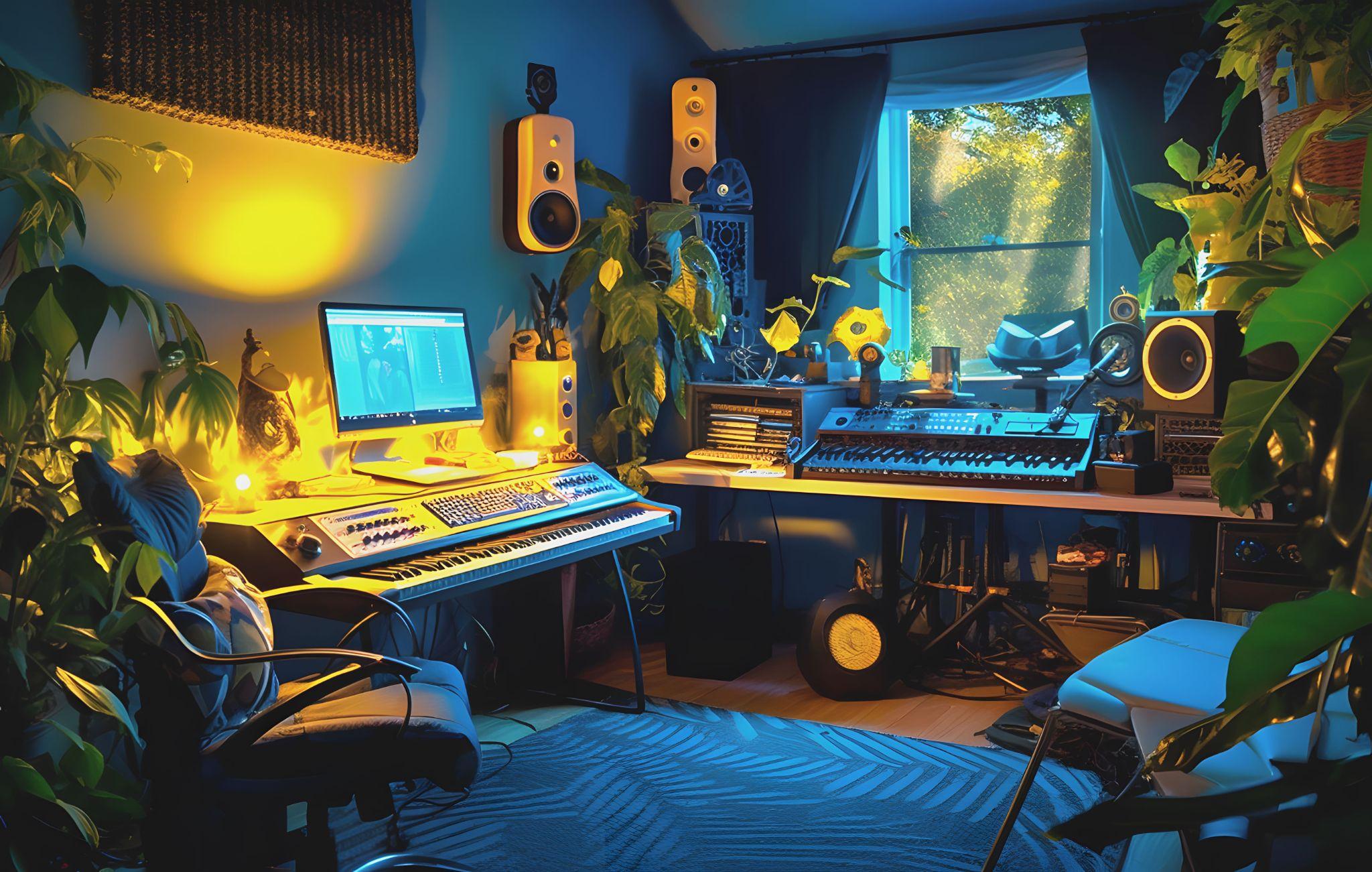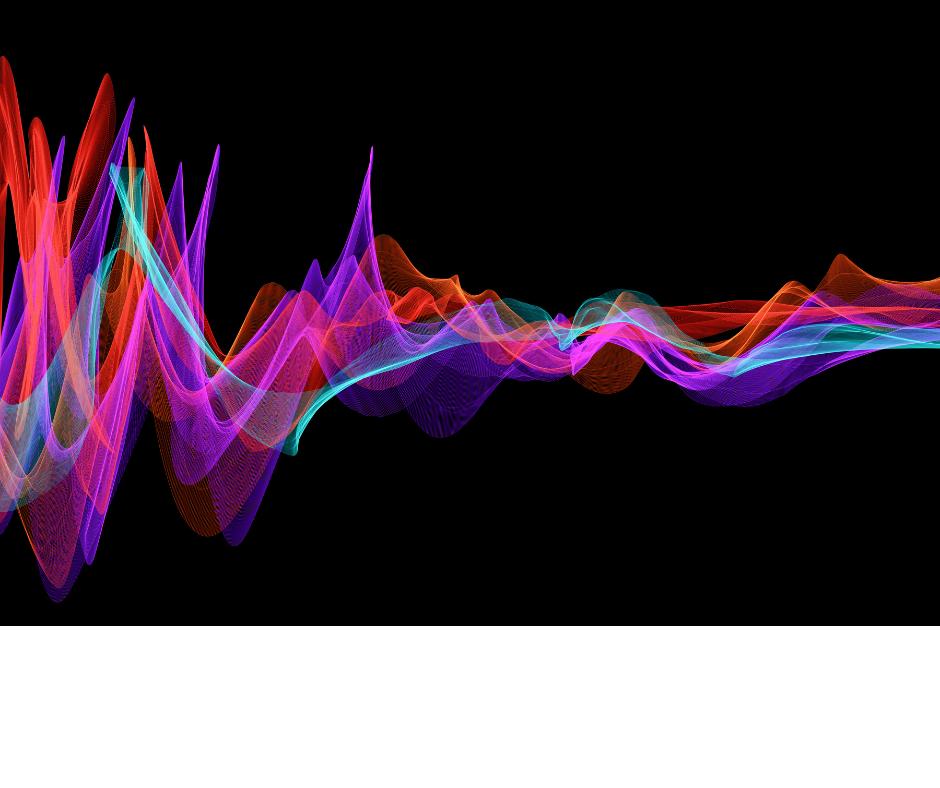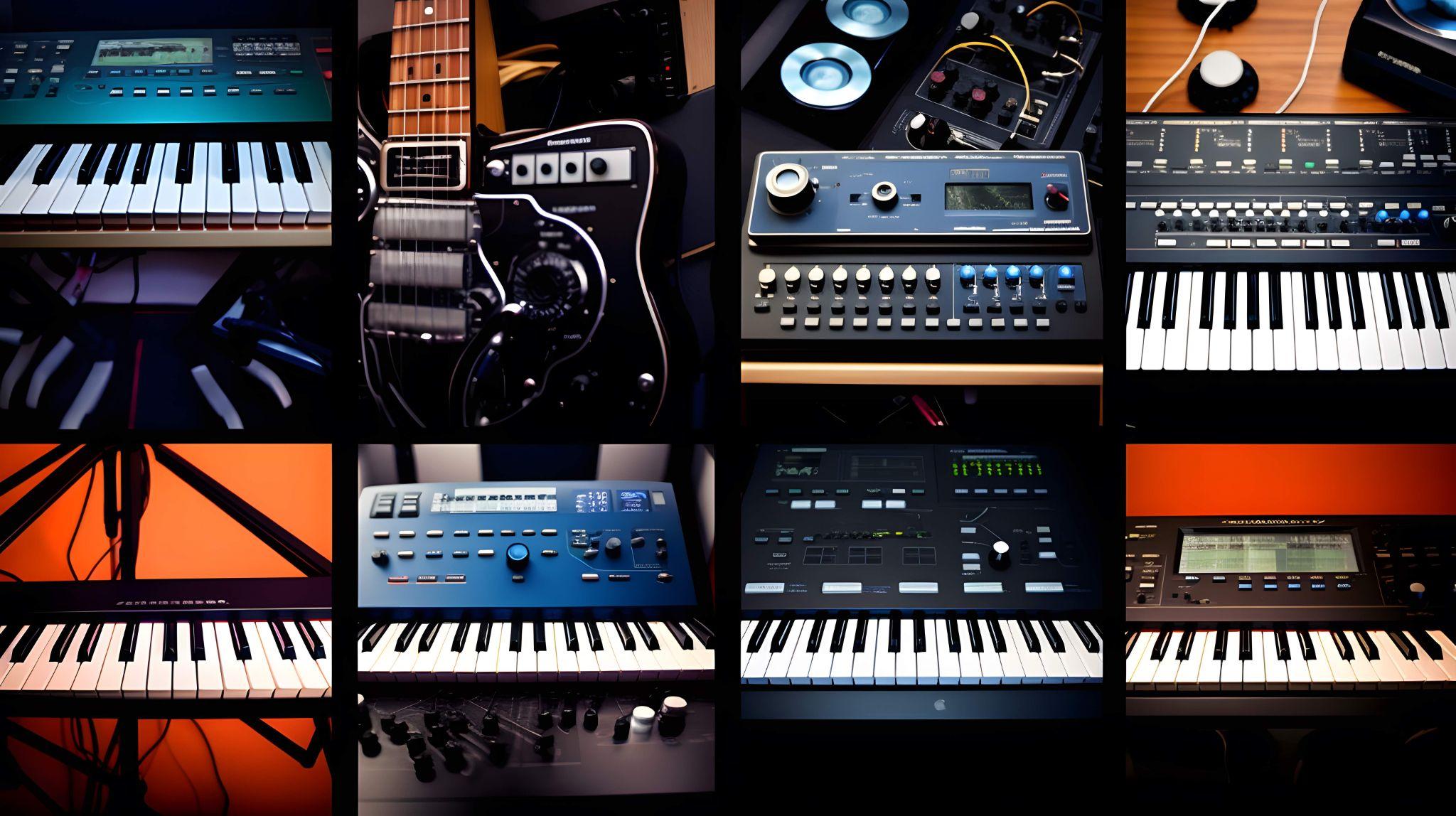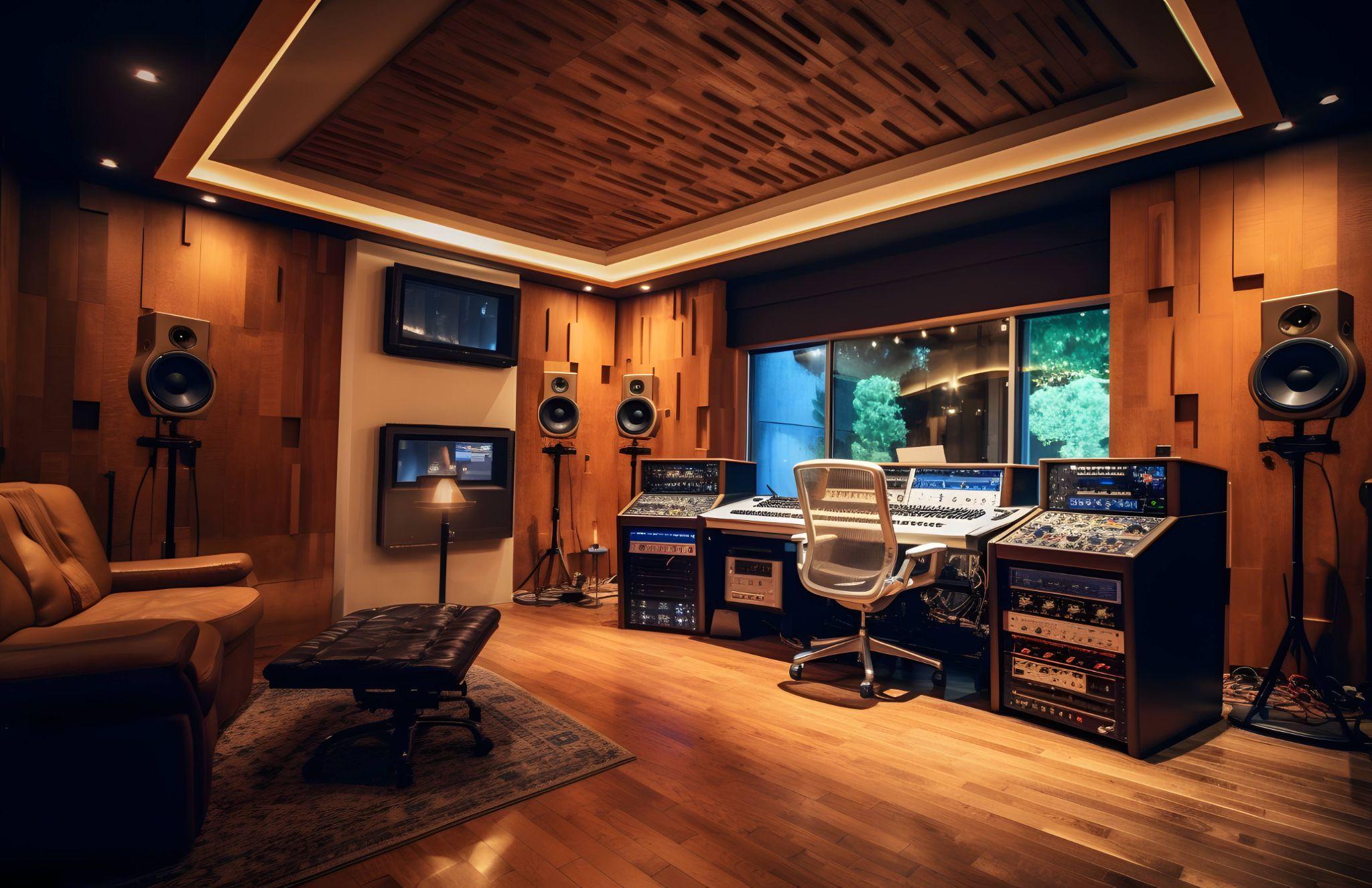
Music education plays a crucial role in nurturing budding musicians and fostering their talents. Institutions like K&M Music School provide critical instruction, resources, and performance opportunities for aspiring musicians. Over time, the advancement of technology and the adoption of modern music equipment have significantly transformed the methods of teaching and learning music in educational institutions. This blog post aims to delve into the significant role that modern music equipment plays in enhancing the overall learning experience at these institutions and its profound impact on music education as a whole.
In our days, the availability and utilization of modern music equipment have revolutionized the way music is composed, produced, and performed. Gone are the days of relying solely on traditional instruments to create music. Nowadays, all musicians have the opportunity to use a wide variety of technology and tools that can enrich their learning journey.
One of the main benefits of using modern music equipment is its capacity to stimulate creativity and encourage experimentation.
With the introduction of digital audio workstations (DAWs), students can explore various genres, experiment with mixing techniques, and create unique sounds. These versatile tools allow musicians to compose and arrange music with great flexibility, unlocking endless possibilities for artistic expression.
Furthermore, modern music equipment offers an immersive learning environment for aspiring musicians. With features like virtual instruments and sample libraries, students can access a wide array of sounds and tones without the need for physical instruments. This enables them to explore diverse music styles and instruments that were once beyond their reach. Whether it’s the classical sounds of a grand piano or the hypnotic beats of electronic drums, modern music equipment allows students to delve into different musical realms and expand their artistic horizons.
Another crucial benefit of modern music equipment is its user-friendly interface, making it accessible to musicians of all skill levels. From beginner-friendly software to advanced synthesizers, these tools provide intuitive controls and visual feedback to foster a seamless learning experience. With interactive tutorials and built-in educational resources, students can quickly grasp the fundamentals of music composition, production, and performance. This accessibility not only empowers aspiring musicians but also encourages their growth and dedication to honing their craft.
Moreover, modern music equipment facilitates collaboration and networking among music school students. With the advent of cloud-based platforms and online collaborations, learners can connect with fellow musicians, teachers, and industry professionals from around the world. By exchanging ideas, sharing compositions, and receiving feedback, students can expand their musical network and gain valuable insights into the industry. This interconnectedness promotes a sense of community and fosters a supportive environment for creative growth and development.
The role of modern music equipment in enhancing the learning experience at music schools is truly remarkable. Its ability to promote creativity, provide an immersive learning environment, offer user-friendly interfaces, and encourage collaboration revolutionizes how music education is approached. As technology continues to advance, aspiring musicians have unprecedented access to resources and tools that expand their artistic boundaries and foster their growth. With modern music equipment at their disposal, students can unlock their musical potential and embark on a transformative journey that nurtures their talent.
The Impact of Modern Music Equipment on Music Education

Broadening Musical Horizons
The advent of contemporary music tools has ushered in a plethora of opportunities for learners in the music field. Previously, music instruction was confined to conventional instruments and techniques. However, the emergence of modern music equipment has granted students the ability to delve into an extensive range of sounds and musical categories. Be it a synthesizer, a rhythm box, or a digital audio workstation, learners can now traverse various musical styles and experiment with a multitude of sounds. This immersion in a wide spectrum of musical genres not only widens their perspectives but also fuels their creativity and aids in the cultivation of their distinct musical identity.
Developing Technical Skills
Modern music equipment requires students to develop technical skills that go beyond traditional instruments. For instance, learning how to program a synthesizer or operate a digital audio workstation requires an understanding of sound design, signal flow, and recording techniques. By incorporating these modern tools into music education, students gain a deeper understanding of music production and develop technical skills that are highly valued in today’s music industry. These skills not only enhance their learning experience but also prepare them for future careers in music production, sound engineering, or music technology.
Understanding Music Production
The introduction of modern music equipment has brought the world of music production into the realm of music education. In the past, music production was seen as a separate discipline, often requiring specialized training. However, with the integration of modern equipment in music schools, students now have the opportunity to learn and apply music production techniques alongside their instrumental or vocal training. This integration allows them to understand the complete process of creating music, from composition and arrangement to recording and mixing. By gaining insights into music production, students can better appreciate the creative choices made by artists and develop a more holistic understanding of music as a whole.
Examples of Modern Music Equipment in Music Schools

| Type of Equipment | Key Features | Benefits for Students |
|---|---|---|
| Digital Pianos and Keyboards | Diverse sounds, effects, and recording capabilities | Opportunity to explore sounds experiment with effects, record performances |
| Electric Guitars and Effects Pedals | Ability to shape tone and sound | Learn about sound design and manipulation |
| Drum Machines and Electronic Kits | Programmable rhythms, range of percussion sounds | Explore genres, develop rhythmic skills, record patterns |
| Synthesizers and MIDI Controllers | Create/manipulate electronic sounds | Understand electronic music, sound design, music production |
| Digital Audio Workstations | Record, edit, and mix music digitally | Learn production techniques, critical listening |
Music institutions have adopted the use of contemporary music tools to enrich the educational journey of their students. Here are some instances of the equipment frequently seen in music institutions:
- Digital Pianos and Keyboards: Digital pianos and keyboards come with an array of features including diverse sounds, effects, and recording functionalities. These instruments equip students with a multifaceted device for rehearsing and creating music, as well as the opportunity to explore various sounds and musical styles.
Beyond the rich assortment of sounds, digital pianos, and keyboards also provide a range of effects such as reverb, chorus, and delay. These effects can be utilized to alter the sound of the instrument, providing students with the opportunity to experiment with sound design and craft distinctive musical compositions. Another notable feature of these instruments is their recording functionality. It empowers students to record their performances, which can be an invaluable asset for practice, self-assessment, and even for composing and producing their own music. This multifunctional nature of digital pianos and keyboards enriches the learning experience, promoting creativity and technical skills among students.
- Electric Guitars and Effects Pedals: Electric guitars combined with effects pedals allow students to explore various tones and effects to develop their unique guitar sounds. These tools enable students to experiment with different styles and genres, expanding their creativity and musical expression.
Moreover, the use of electric guitars and effects pedals also introduces students to the technical aspects of sound manipulation. They learn how to adjust parameters such as gain, tone, and level, and understand how different settings can drastically alter their sound. This hands-on experience with sound modulation equips them with a deeper understanding of music production, making them not just better musicians, but also well-rounded artists with a comprehensive understanding of their craft.
- Drum Machines and Electronic Drum Kits: Drum machines and electronic drum kits offer a new dimension to drumming. They provide students with the ability to create and program their drum beats, experiment with different sounds, and practice rhythm in a controlled environment. This equipment is beneficial for students who may not have access to a full acoustic drum set.
In addition to this, drum machines and electronic drum kits also offer a wide range of percussion sounds and effects that are not typically available on an acoustic drum set. This allows students to explore different musical genres and styles, from hip-hop and electronic music to rock and jazz. Furthermore, these digital tools also provide students with the opportunity to record their drum patterns and sequences, which can be a valuable tool for practice and self-evaluation. This hands-on experience with digital drumming tools not only enhances their rhythmic skills but also fosters creativity and innovation in their musical journey.
- Synthesizers and MIDI Controllers: Synthesizers and MIDI controllers allow students to create and manipulate a wide variety of electronic sounds. These instruments offer endless possibilities for sound design, composition, and production. By incorporating synthesizers into their education, students gain a deeper understanding of electronic music and the art of synthesis.
Furthermore, synthesizers and MIDI controllers also expose students to the realm of music production. They learn how to utilize MIDI to manage diverse elements of their music, from the tone and loudness of notes to the alteration of sounds. This practical experience with digital music production instruments not only boosts their technical abilities but also encourages creativity and innovation. Moreover, these tools offer students the chance to record and produce their own music, a skill that holds significant value in the current digital music landscape. This holistic approach to music education equips students for a broad spectrum of musical pursuits, spanning from performance to production.
- Digital Audio Workstations (DAWs): DAWs are powerful software tools that enable students to record, edit, and mix their own music. With a vast array of virtual instruments and plugins, students can create professional-quality compositions within a digital environment. DAWs also provide students with the opportunity to learn about music production techniques and develop critical listening skills.
Beyond these advantages, DAWs also acquaint students with the complex process of music production, spanning from arranging and sequencing to mastering. They learn to stack tracks, utilize effects, and tweak parameters to attain the desired auditory result. This practical exposure to music production imparts a deeper comprehension of the technical facets of music and bolsters their capacity to critically evaluate and appreciate music. Moreover, the competencies acquired from working with DAWs are incredibly valuable in the contemporary music industry, where digital production is commonplace. This experience not only amplifies their musical understanding but also readies them for potential careers in areas like music production, sound engineering, and beyond.
These instances represent just a fraction of the contemporary music tools employed in music institutions. The accessibility and incorporation of such equipment not only offer students an expanded spectrum of learning possibilities but also stimulate creative thinking and encourage experimental approaches. By integrating these modern tools into their curriculum, music schools are able to provide a more comprehensive and immersive learning experience. This not only enhances students’ technical skills but also allows them to explore and develop their unique musical style, fostering a deeper understanding and appreciation of music in all its varied forms.
The Benefits of Modern Music Equipment in Music Education

The incorporation of contemporary music tools into music education yields a multitude of advantages for learners. These benefits transcend the realm of technical skill enhancement and span various facets of their musical exploration. From fostering creativity and problem-solving skills to promoting collaboration and broadening musical horizons, modern music equipment plays a pivotal role in shaping a comprehensive and enriching learning experience. It not only equips students with the practical skills needed to navigate the music industry but also nurtures a deeper understanding and appreciation of music as an art form. In this way, the use of modern music equipment in music education is not just about teaching students to play an instrument or use a piece of software, but about inspiring a lifelong passion for music and creativity.
Enhancing Creativity
Contemporary music tools provide students with the platform to delve into their creative capacities. Equipped with an extensive array of sounds, effects, and potentialities, students are encouraged to experiment and challenge the confines of conventional music. They can unearth new tunes, harmonies, and beats that they might not have encountered previously. This liberty to invent and pioneer nurtures an atmosphere of artistic articulation and aids students in cultivating their distinct musical identity. By providing the tools to explore and experiment, music schools are not just teaching students to play music but also to understand and appreciate the creative process that underpins every melody, rhythm, and harmony. This creative exploration can be a transformative experience, sparking a lifelong passion for music and a deep appreciation for the power of sound.
Improving Problem-Solving Skills
Mastering the use and navigation of contemporary music tools necessitates problem-solving abilities. Students frequently face technical hurdles, be it resolving software glitches or comprehending intricate signal pathways. By tackling these obstacles, students cultivate critical thinking and problem-solving skills that are transferrable to numerous facets of their musical journey and professional careers. Additionally, these skills can foster resilience and adaptability, as students learn to approach challenges with a solution-oriented mindset. This not only enhances their technical proficiency but also prepares them for the dynamic and often unpredictable nature of the music industry.
Promoting Collaboration
Contemporary music tools also play a significant role in promoting collaboration among learners. The capability to produce and disseminate music in a digital format allows students to collaborate with counterparts from diverse geographical locations and cultural backgrounds. This collaborative environment nurtures teamwork, communication, and the sharing of creative ideas. Students can gain insights from each other’s strengths and areas for improvement, leading to personal development and the cultivation of a cooperative mindset. Furthermore, this collaborative experience can expose students to a variety of musical styles and perspectives, enriching their understanding of music as a universal language. It also prepares them for the collaborative nature of the music industry, where musicians, producers, and sound engineers often work together to create a piece of music.
Increasing Engagement
The use of modern music equipment in music education enhances student engagement and motivation. Traditional practice sessions can sometimes become repetitive and monotonous, leading to a decrease in enthusiasm. However, with the incorporation of modern equipment, students can explore different sounds, experiment with effects, and engage in interactive learning experiences. This increased engagement fosters a deeper connection to the learning process and can significantly improve student retention and progress.
Furthermore, the gamification elements present in some modern music equipment, such as learning apps or interactive tutorials, can make the learning process more enjoyable and rewarding. By turning music education into an enjoyable experience, students are more likely to stay motivated and committed to their musical journey.
The Future of Music Education and Technology
The incorporation of contemporary music tools into music education has significantly transformed the methods and processes of teaching and learning music. As technological advancements continue to evolve at a rapid pace, the future landscape of music education appears to be filled with potential and brimming with exhilarating opportunities. These advancements not only enhance the learning experience but also open up new avenues for creativity and innovation. From virtual reality music lessons to AI-assisted composition, the possibilities are endless.
Musicians’ Attitudes Towards Technology
The perspective of musicians toward the integration of technology in education has undergone a significant transformation over the years. In the early stages, there was a degree of skepticism among some musicians regarding the adoption of technology. They harbored concerns that it might overshadow traditional instruments and methodologies. However, as they started to experience firsthand the advantages that technology brought to their musical endeavors, their viewpoints underwent a change. A large number of musicians now perceive technology as an ally that supplements and broadens their artistic potential. They recognize that technology, rather than replacing traditional methods, offers new ways to explore and express their musical creativity. From digital audio workstations that enable complex compositions to online platforms that connect musicians across the globe, technology has become an integral part of the modern musician’s toolkit.
The Prevalence of Technology in Music Learning
The presence of technology in music learning has grown exponentially. From internet-based tutorials and virtual music classes to interactive educational platforms and music production software, technology has become an integral component of the music education ecosystem. This widespread integration of technology has democratized music education, breaking down barriers and making it more accessible to individuals from a wide array of backgrounds and geographical locations. It has opened up a world of opportunities for aspiring musicians who may not have access to traditional music education resources. Whether it’s learning to play an instrument through online lessons, composing music using digital software, or connecting with other musicians across the globe, technology has transformed the way we learn and experience music. It has not only broadened the reach of music education but also enriched it by fostering a more inclusive and diverse learning environment.
Barriers to Technology Use in Music Learning
Despite the substantial strides technology has made in music education, there remain some obstacles to its broader implementation. A primary hurdle is the financial burden associated with procuring and maintaining modern music equipment. High-end instruments, software licenses, and audio interfaces often come with a hefty price tag, making them less accessible to students who are financially constrained. Moreover, the complexity of certain technological tools can present a steep learning curve for both students and instructors. This complexity often necessitates additional training and support to fully harness the potential of the equipment. These challenges highlight the need for more affordable, user-friendly music technology solutions, as well as increased support and training for students and teachers. Despite these challenges, the benefits of integrating technology into music education are clear, and with continued innovation and investment, these barriers can be overcome.l.
Musicians’ Interest in Using Technology for Career Development
In the contemporary music industry, technology has become an indispensable component in career progression. Musicians are increasingly leveraging digital platforms to disseminate their music, engage with their audience, and establish their personal brand. Social media, music streaming platforms, and online music distribution services have revolutionized the way musicians market their creations and cultivate their fan base. Furthermore, technology has paved the way for musicians to explore diverse revenue streams, such as licensing their music for use in film, television, and advertising.
As technological advancements continue to evolve, musicians are well-positioned to further utilize these tools to enhance their career opportunities and reach a broader audience. From concerts in virtual reality to music generated by artificial intelligence, the scope for technology-driven innovation in the music industry is immense. This not only opens up new creative possibilities but also transforms the way music is produced, distributed, and consumed. As we look to the future, it’s clear that the intersection of music and technology will continue to shape the music industry in exciting and unpredictable ways.
Conclusion

The significance of contemporary music tools in augmenting the learning experience at music schools is immense. These tools offer a plethora of benefits to students, ranging from expanding musical perspectives to fostering technical skills and deepening understanding of music production. The accessibility of digital pianos, synthesizers, drum machines, and digital audio workstations, among other instruments, empowers students to delve into new sonic territories, experiment with diverse genres, and hone their creative and technical proficiencies.
Furthermore, the integration of modern music equipment in music education fosters collaboration, problem-solving abilities, and engagement among learners. The capacity to collaborate digitally and share musical creations unveils a universe of opportunities for students to learn from each other and cultivate teamwork and communication skills. The elements of gamification present in some music tools make the learning journey more enjoyable and stimulating, leading to heightened student engagement.
As we continue to witness the evolution of technology, the future of music education holds immense promise. The attitudes of musicians towards technology have undergone a significant shift, and the prevalence of technology in music learning continues to grow. While there may be certain obstacles to the adoption of technology, such as cost and steep learning curves, musicians and educators are devising innovative strategies to surmount these challenges. Given the pivotal role technology plays in career development for musicians, it’s clear that it will continue to shape the music industry and the educational landscape.
In summary, modern musical instruments and tools have brought about a transformative change in music education by offering students unlimited avenues for artistic expression, technical growth, and cooperative learning. The incorporation of technology into music education has significantly enhanced the learning journey, equipping students with the dynamic nature of the music industry. As technological advancements continue to progress, it’s imperative for music institutions to adopt these innovations and adjust their curriculum to provide students with the essential skills needed for success in the digital era. This not only boosts their technical expertise but also fosters a profound understanding and appreciation of music as a form of art.
Leave a Reply